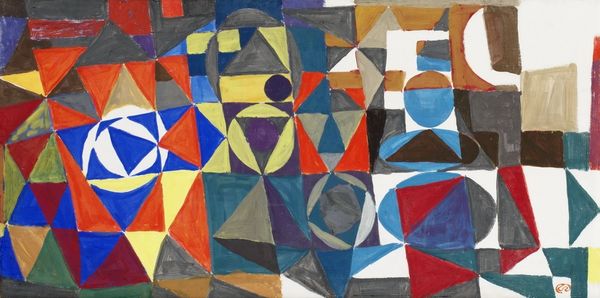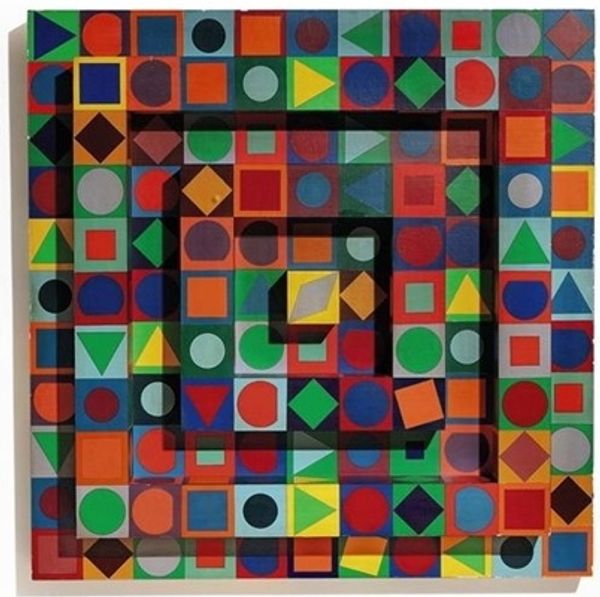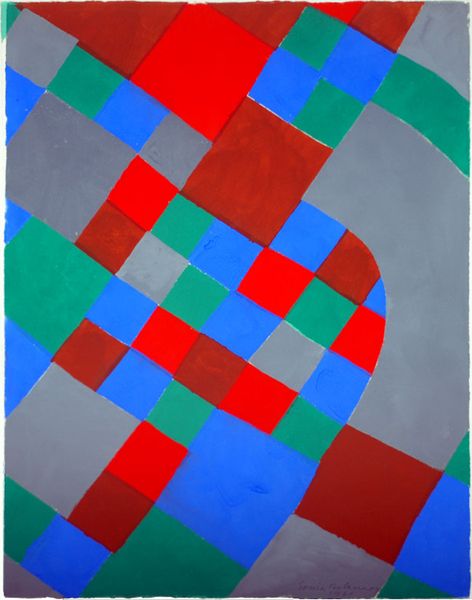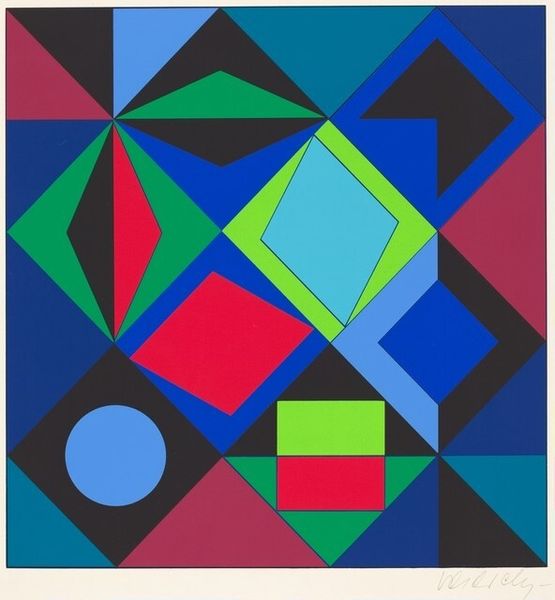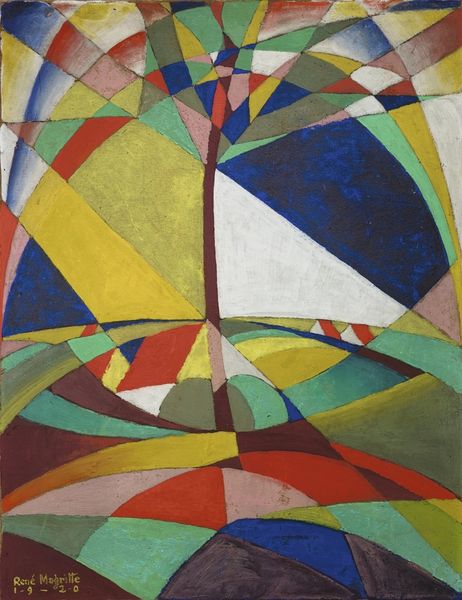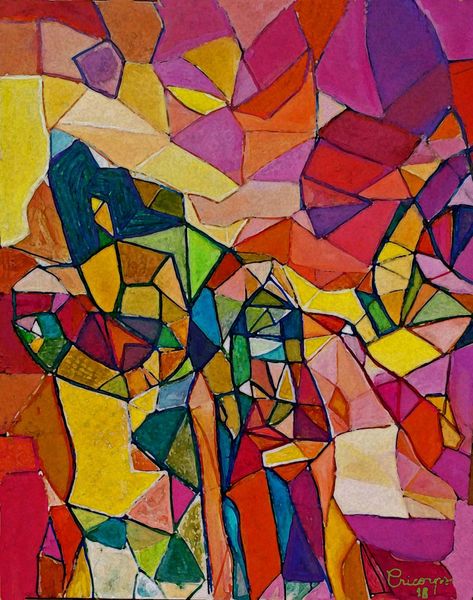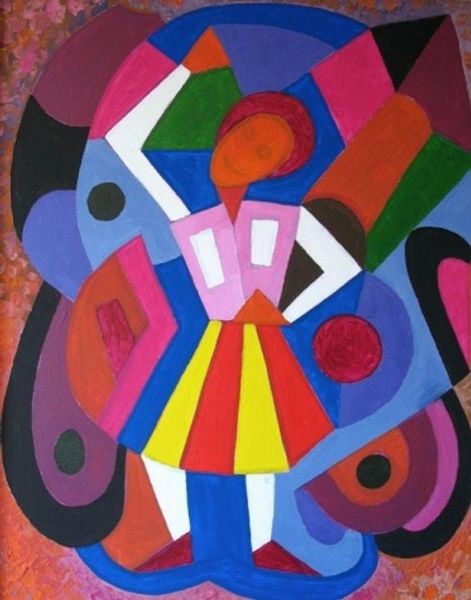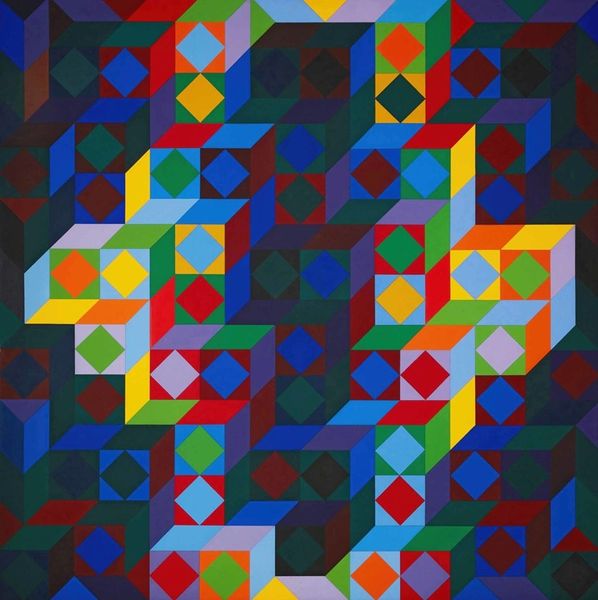
painting, acrylic-paint
#
abstract-expressionism
#
natural stone pattern
#
abstract expressionism
#
abstract painting
#
painting
#
acrylic-paint
#
geometric pattern
#
geometric
#
geometric-abstraction
#
modernism
Dimensions: 73 x 60 cm
Copyright: Manuel Cargaleiro,Fair Use
Curator: This vibrant acrylic painting, titled "Sem Título" or "Untitled," was created by Manuel Cargaleiro in 1969. It currently resides here at the Calouste Gulbenkian Museum. Editor: My immediate reaction is...joyful chaos. It’s visually very busy but simultaneously soothing. All those blues—it reminds me of tile work, almost like I'm looking at intricate mosaics from afar. Curator: I find that observation quite insightful. Cargaleiro did spend time focusing on the tile factories in Portugal and often examined how different forms and production processes influenced design and craftsmanship. Look closely—notice how each of the 16 squares are distinct, but connected through their recurring use of blue tones? Editor: Exactly! The squares operate like a matrix – each a small world. The individual components come together to form something larger. Considering its 1969 creation date, one wonders what Cargaleiro may have been addressing through geometric abstraction—ideas of interconnectedness during a politically turbulent time, maybe? Curator: A valid hypothesis! If we consider that geometric abstraction had roots within the early 20th-century avant-garde, movements such as de Stijl, Bauhaus, and the Russian constructivists can serve as inspiration for him. He’s simplifying down to core material and compositional ideas in such ways. Acrylic paints would be becoming much more widely produced at this point, leading Cargaleiro to explore new processes with them as well. Editor: The hand is ever present despite its reliance on hard-edge geometry; a certain organic element keeps everything approachable. What kind of cultural narratives can arise with that integration? Does he attempt to engage us through contrasting precision against chance within a larger social context, creating works that respond to the viewer while simultaneously acknowledging their place in it? Curator: Interesting... I am inclined to see more focus on the construction: a tangible product, reflecting how it was conceived, fabricated, and received. Each square becomes an active, distinct part of its history, contributing towards the creation of an engaging visual for all! Editor: Agreed; though, as we analyze the work through both a social and material framework, one wonders how Cargaleiro might himself define "Untitled.” After all, his act is giving definition—in doing that, what identity does he try building, both within his compositions, and for himself? Curator: Ultimately, this painting allows us multiple points of entry - something for both of us to continue chewing over, and hopefully for the public to do as well.
Comments
No comments
Be the first to comment and join the conversation on the ultimate creative platform.


